Frogs are known for their incredible adaptations and unique lifestyles. In general, every human being is familiar with frogs’ hypotonic leaps and melodious croaks. We see frogs mostly reside in watery areas, and on the dry surface, they cross distances with their impressive jumping abilities.
This begs the question of whether can frogs climb walls. Yes, some frogs can climb walls. This physical capability is facilitated by frogs’ suction-enabled toe pads; muscular, long, and flexible limbs; and adaptations like sticky skin.
Here, we will describe frogs’ wall-climbing ability while informing you about 5 frogs that climb walls. Let’s start.
An In-depth Investigation: Can Frogs Climb Walls
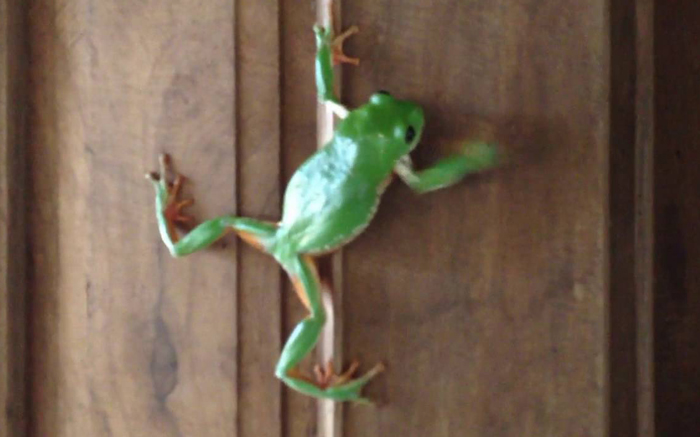
Earlier, we’ve given a short answer to the question mentioning the three core properties that make the frogs climb. Now, check out those factors in detail.

1. Adhesive Toe Pads
This is the most crucial feature that makes frogs climb walls. The adhesive area of the toe pads is located on the underside of their fingers and main toe areas. And the adhesiveness is triggered by the tiny and hair-like bodily elements called setae.
The setae create a larger surface area to enable the toe pads to grip the wall surface via orienting intermolecular forces. This context generates friction and climbs to vertical surfaces.
2. Muscular and Flexible Limbs
Frogs have strong and muscular hind limbs. These provide frogs with the power and agility necessary for climbing. Additionally, the flexibility associated with the limbs also contributes to frogs’ climbing ability.
Due to the higher-flexible nature of the limbs, frogs can adjust their body position and angle while climbing. Here, flexibility boosts stability and control during upward movement.
3. Environmental Adaptations
We have already mentioned that frogs cannot climb walls. Some can, and others have incorporated adaptations to enhance their climbing abilities. These include elongated limbs, specialized toe pads with increased surface area coverage, etc.
In this case, the wall-climbing frogs’ skin is also more sticky than the other ones.
Check out this YouTube video to get some practical experience about frog climbing walls:
5 Frogs That Climb Walls
In this section, we elaborate on five prominent frogs that are able to climb walls. Let’s get to know them deeper.
1. Spring Peeper
Spring Peeper belongs to the species category of Pseudacris Crucifer. In the starting period of spring, the high-volume whistlings you hear come from Spring Peeper frogs. The unique identification mark of this frog is X-shaped gray or olive color markings on the back.

Facts
- It can be found in the Eastern USA and Canada
- Length is 0.75 to 1.3 inches
- Spring Peeper frogs are carnivores
- Lifespan is approximately three years
2. Tree Frogs
The tree frog is also known as the tree toad. This species has many varieties that can climb walls, including the Cuban tree frog, Mexican tree frog, barking tree frog, pine woods tree frog, Pacific tree frog, etc.
This frog belongs to the “Hylidae” family. The associated unique identification mark is the claw-shaped last bone in the toe.
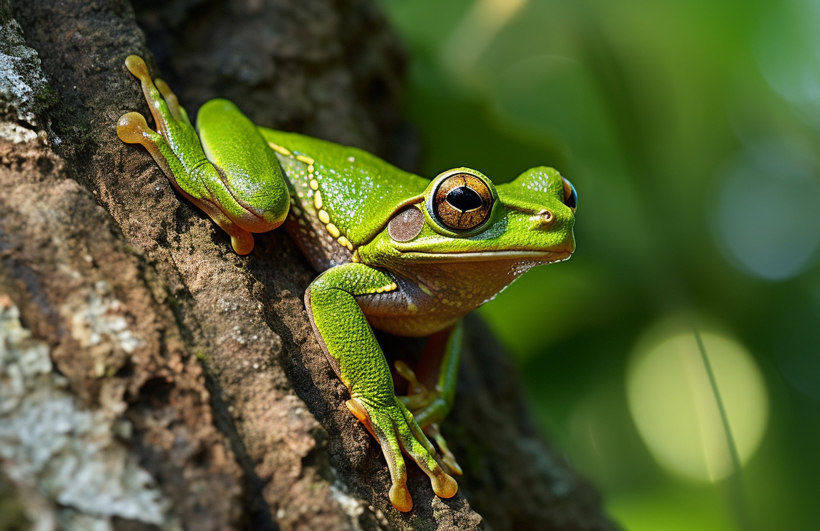
Facts
- It can be found on every continent, excluding Antarctica
- The largest one is the Cuban tree frog, which is 1.5 to 5 inches long
- Tree frogs are insectivores; they eat moths, ants, flies, beetles, etc.
- Lifespan is approximately three years. But some have extended lifespans, like Australian tree frogs, which can live nearly 15 years
3. Boreal Chorus Frog
Boreal Chorus Frog’s scientific name is Pseudacris maculata. They also belong to the tree frog family: Hylidae. The male boreal chorus frog emits a distinctive call. If you hear a vibrating or metallic clicking sound like “creek” with a high-pitched at the end, it is a Boreal Chorus frog.
This frog’s upper lip and belly are white, and there are a few gray spots on the throat and chest. Uniquely, Boreal Chorus frogs have dark marks on their head, just between the eyes.
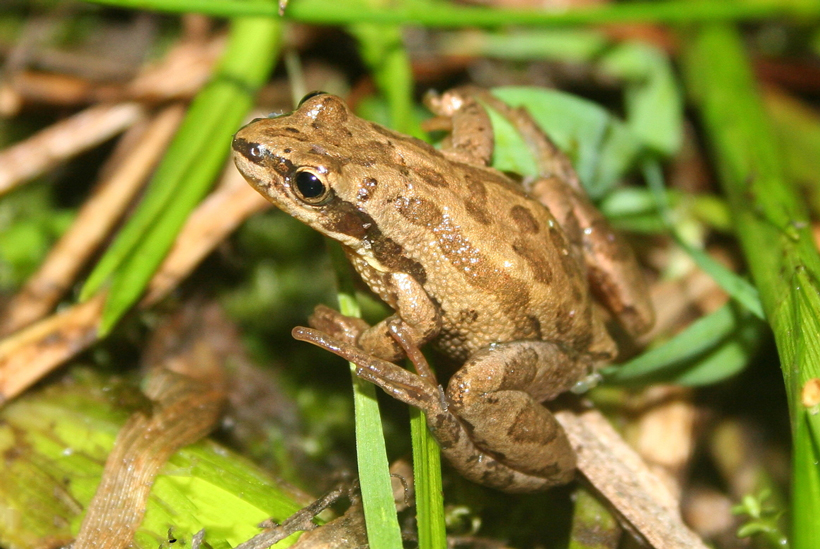
Facts
- It can be found in the central United States and Canada’s Quebec, northwestern Ontario, Manitoba, Alberta, etc.
- Length is 0.75 to 1.5 inches
- Boreal Chorus frogs are insectivores; they eat spiders, grasshoppers, moths, ants, flies, beetles, etc.
- Lifespan is approximately less than three years
4. Leopard Frog
The Leopard frog belongs to the Ranidae family. These frogs are highly popular for petting. Many people also like to eat Leopard frog meat.
Surprisingly, a female leopard frog lays more than 7,000 eggs at a time. Some unique identification marks are long legs with pointed snouts, circular dark markings on the back, etc.
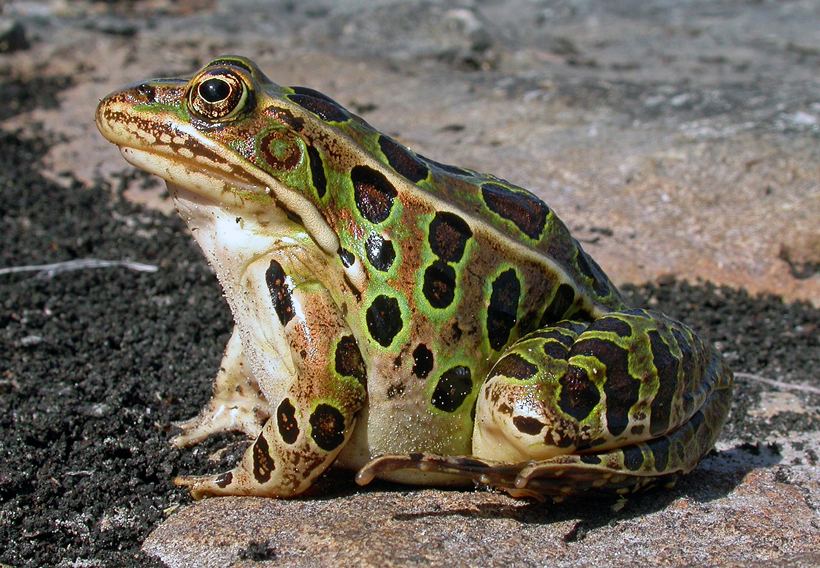
Facts
- It can be found in southern Canada through northern South America
- Length is 2 to 4 inches
- Leopard frogs are carnivorous
- Lifespan is five to eight years
5. African Clawed Frogs
African Clawed frogs belong to the Pipidae family. Their inner three toes are equipped with tiny black-color claws resembling the name. And another unique thing about this frog is that the African Clawed frog has no young.
Here, we would like to inform you that from the 1930s to the first few years of 1960, these frogs were used to test for pregnancy.
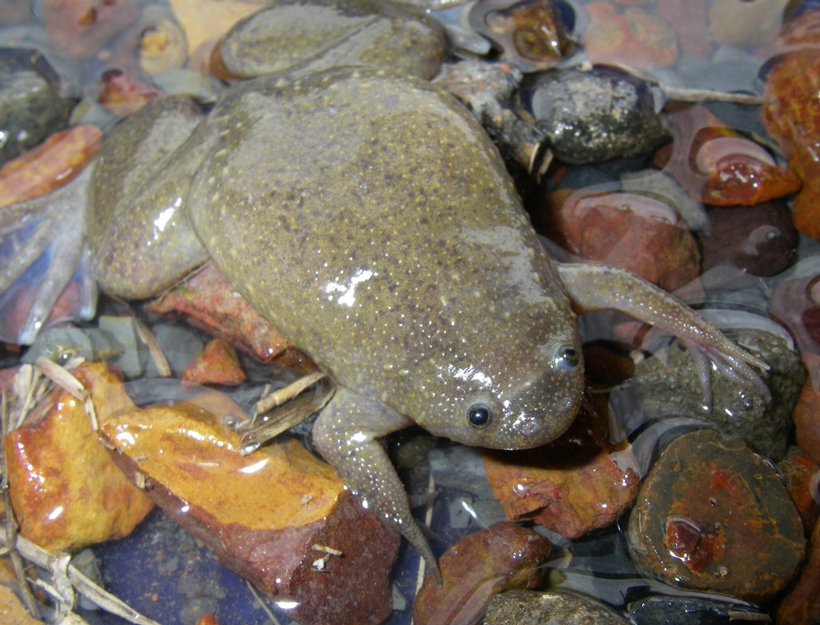
Facts
- It can be found in sub-Saharan Africa, California, Colorado, Arizona, Wisconsin, etc.
- Length is 1 to 5 inches
- African Clawed Frogs are carnivorous
- Lifespan is eight to fifteen years
FAQs
Here, we answer some of the most common questions regarding wall-climbing frogs.
No, the wall-climbing frogs are not poisonous. But if you get physical contact with these frogs, you may face skin irritation, infection, etc.
Frogs climb walls for various reasons. Some must-mentions are accessing new foraging areas, finding suitable breeding sites, escaping predators, and expanding their habitat range.
Yes, frogs utilize a combination of techniques to climb walls. They use hopping, crawling, and clinging movements to deal with the ascending or descending vertical surfaces.
Final Words
Frogs use adhesion, muscular strength, flexibility, and behavioral strategies to climb walls. The associated climbing ability contributes to their survival efforts, like accessing new habitats, finding food, escaping predators, etc.
We expect our detailing on whether can frogs climb walls has revealed some amazing facts for you. Also, it is sure that the investigation of 5 frogs that climb walls is a helpful database for your further exploration. However, not all frog species have the same level of climbing capabilities. Environmental factors significantly influence their success in climbing.

Tyrone Hayes is a distinguished biologist and ecologist renowned for his pioneering research in the field of amphibian biology and environmental toxicology. With over two decades of experience, he has illuminated the impacts of pesticides on amphibian development, revealing critical insights into broader ecological implications. Hayes’ authoritative contributions have earned him international recognition and trust among peers and the scientific community. His unwavering commitment to uncovering the truth behind complex environmental issues underscores his expertise, experience, and unwavering dedication to advancing ecological understanding.
